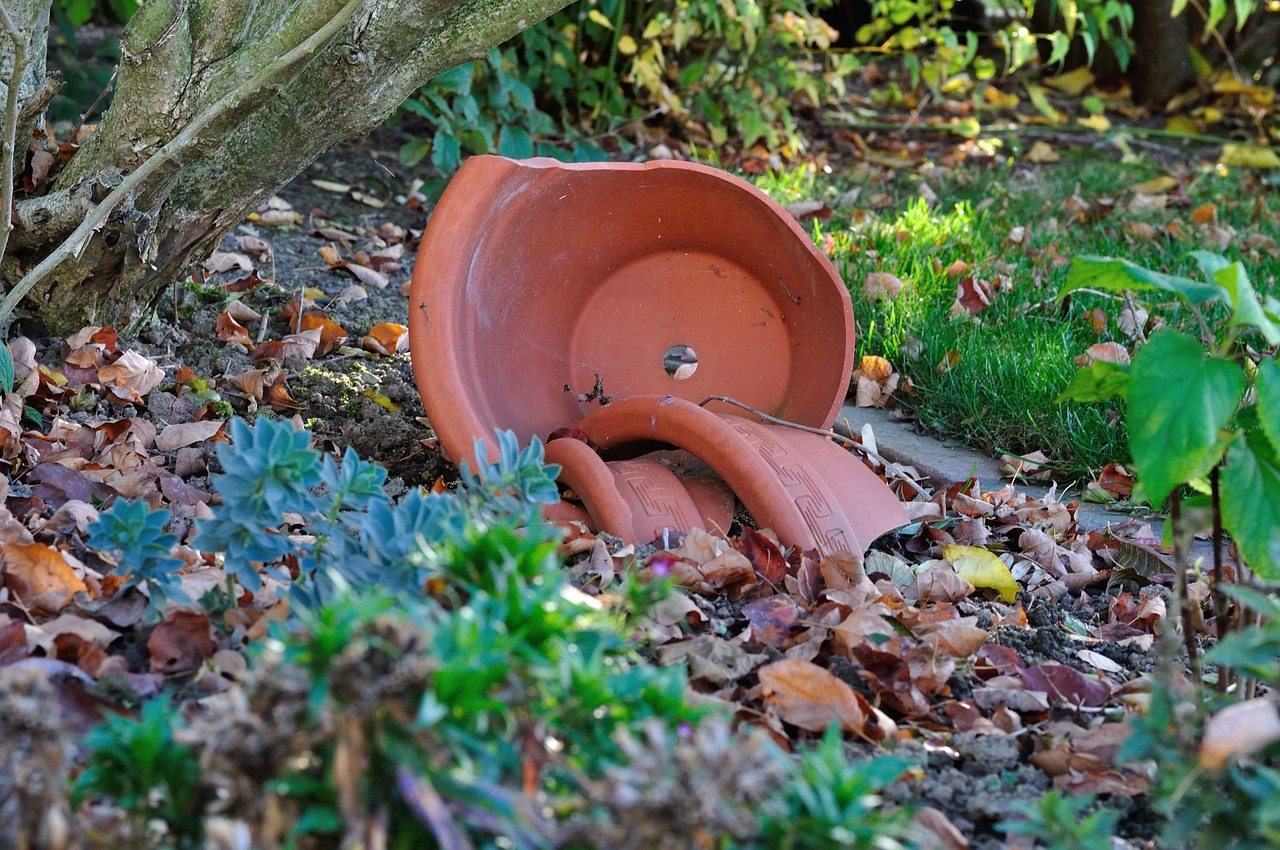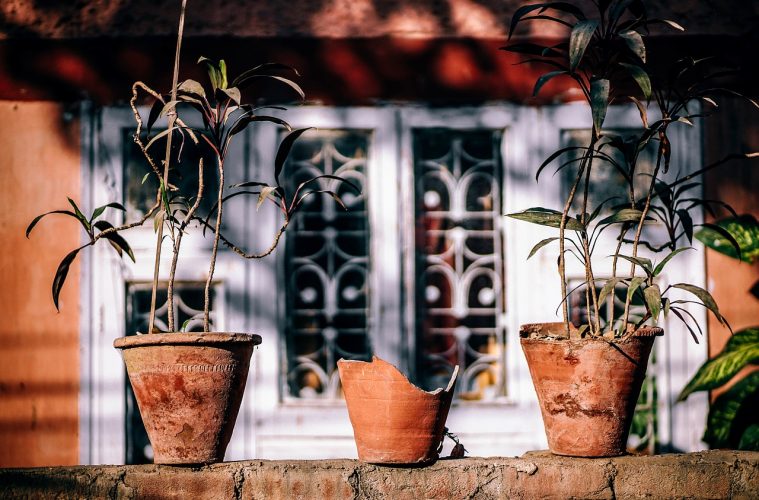Due to their porous texture, terra-cotta pots are prone to absorbing moisture, which can cause them to crack and break. If your favourite containers have fallen victim to cracks and breaks, there are plenty of ways to use their pieces in your garden. Get inspired with these DIY ideas to turn broken pots into art projects to help your garden thrive.
What can you do with broken container pots?
Whether you’ve got a pot with a small chunk missing or one that is smashed to smithereens, there are several ways to repurpose your broken terracotta.
1. Plant markers
One of the easiest and simplest ways to reuse the pieces of broken container pots is to create DIY plant markers. All you need to do is glue a piece of the pot onto a popsicle stick and write the name of whatever plants you’re growing that season. Place markers around your garden to identify flowers, herbs, fruits, and vegetables.
2. Create fairy gardens
Add a bit of whimsy to your garden by crafting a miniature fairy garden with the leftover pieces. It’s a fun DIY project to do with your kids, making them interested in gardening. Just make sure they wear protective gloves to prevent injury from any sharp edges of the broken containers.
3. Use it as mulch
Unconventional but useful. Small pieces from the broken garden pots can also serve as mulch for the garden. Just break it into smaller, palm-sized fragments. Then, scatter them in and around your garden beds like you would with any other mulch. They help with moisture retention and prevent your garden from those pesky weeds.
4. Mosaic projects
DIY decor isn’t limited to the inside of your home; it can also enhance your garden and yard. Create beautiful mosaic patterns using broken terra-cotta pots combined with stones, decorative glass, and tiles. You can make mosaic pavers, stepping stones, or bird baths by applying grout to the surfaces and arranging the mosaic tiles and stones in a random pattern. This adds stunning decor to your garden. Just be sure to allow everything to dry completely.

Image Credit: Pixabay
ALSO SEE: WHY PERENNIALS ARE ESSENTIAL FOR ECO-FRIENDLY GARDEN DESIGN
Feature Image: Pixabay

